When people go out looking for birds, they are birding, while those who are looking for moths are mothing. More amusingly, those who engage in mothing are called mothers; however, the word is often hyphenated as moth-ers to highlight its different meaning and pronunciation.
When we were invited to attend a private mothing event at the Wahkeena Nature Preserve, we decided to give it a try. We really weren’t sure how to go about it or what to expect, but Robyn and Tom of the preserve, as well as our fellow moth-ers, helped introduce us to the world of mothing.

The Lure
In order to lure in the moths so we could view them, both light and scent lures were employed. Anyone who has ever watched moths circle around a porch light probably gets the basic idea of the light lure. A white sheet is hung on a line where it is illuminated by a light. At the site where Bob and I were mothing, two lights were used. A mercury vapor light illuminated one side of the sheet while an ultraviolet light illuminated the other. Both lights were powered by a marine battery connected to an AC inverter. It looked like the photo below.
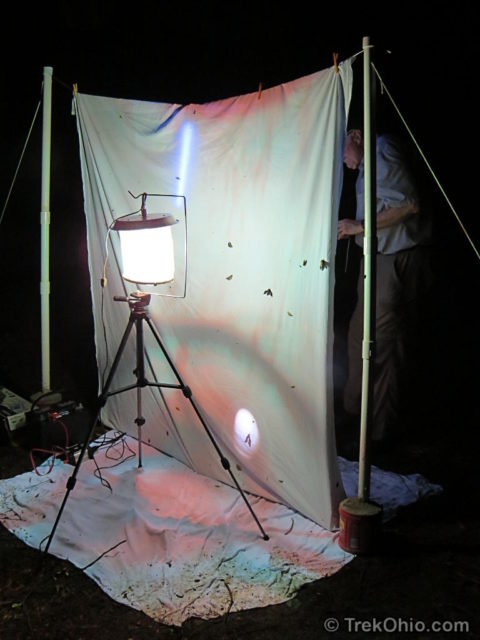
We were told the ingredients used in the scent lure, but the only ones that I remember are stale beer and over-ripe, mashed banana. This concoction was painted on nearby tree trunks. We weren’t having a lot of success with the scent lure at our site, but there was another lure set up elsewhere. Perhaps it had more success there.
Photographing Moths
We had hoped to take photographs of some of the moths that we saw, but ahead of time we were clueless as to what this would entail. When photographing butterflies I’m typically some distance from them, and I’m zooming in on them using my camera’s telephoto. I thought maybe I would be doing something similar when photographing moths. WRONG. To my amazement, most of the moths patiently sat there while my camera loomed over their heads by a mere inch, so all the photos that you see here were taken using a macro setting.
As to lighting our photographic subjects, we used the ambient lighting from the lure, but we also spot-illuminated the moths with small flashlights. Sometimes this was awkward and in such cases it can help to have a partner shine the flashlight while the other person takes the photo. We did not use flash while doing macro photography.
A lot of people take photos of the moths to aid in identifying them later, and for this purpose the quality of the photos doesn’t have to be that high. However I was hoping that at least a few photos would be good enough to publish here. Since the low light conditions concerned me, I brought a monopod along (basically a walking stick with a camera mount). I was the only person there using any sort of support for my camera, so this may have been a bit weird. However, I did end up with many more crisp photos than I had been anticipating, and hopefully the monopod was compact enough that I wasn’t interfering with my fellow moth-ers.
Usually if I’m out in the woods after dark, I would be wearing DEET to protect myself against mosquitoes. However in this case I was trying to view insects, so I was unsure what to do. As a barrier to the mosquitoes, I decided to wear long pants and long sleeves. But since I originally thought that I might be using telephoto and photographing the moths at a distance, I brought a can of DEET along just in case. It’s a good thing that I held off on applying the DEET, though. Some moth-ers handle the moths, but even if I wasn’t going out of my way to handle them, once in a while moths would just land on me. One mosquito bit me on the wrist, but considering that I had spent the entire evening in the woods, that didn’t seem too bad.
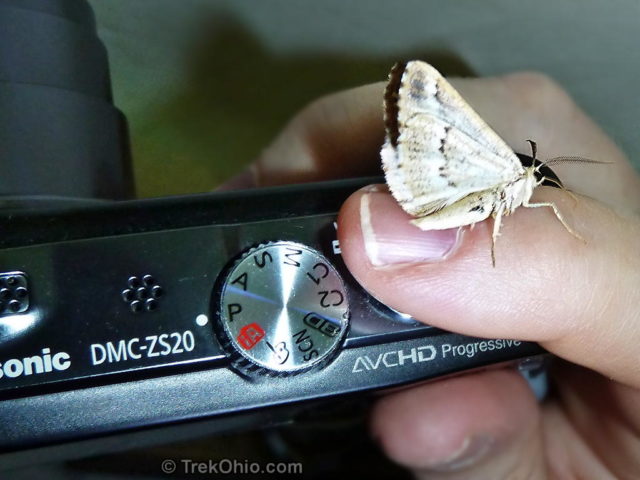
The Moths
I could only identify a few moth species before attending this event, but the other people at Wahkeena were naming species as I looked at them. However as a rank amateur I found it difficult to remember all the names as I looked over my photos at home. Between partially remembered names and internet searches I have tried to identify the species below, but I’m not 100% confident in my identifications. I welcome feedback if anyone notices errors.
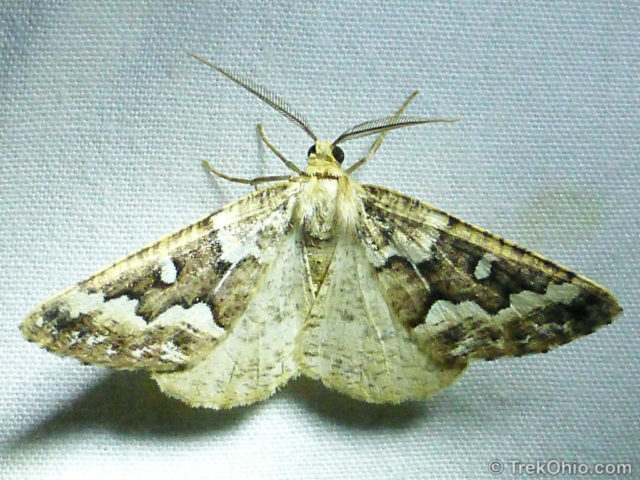
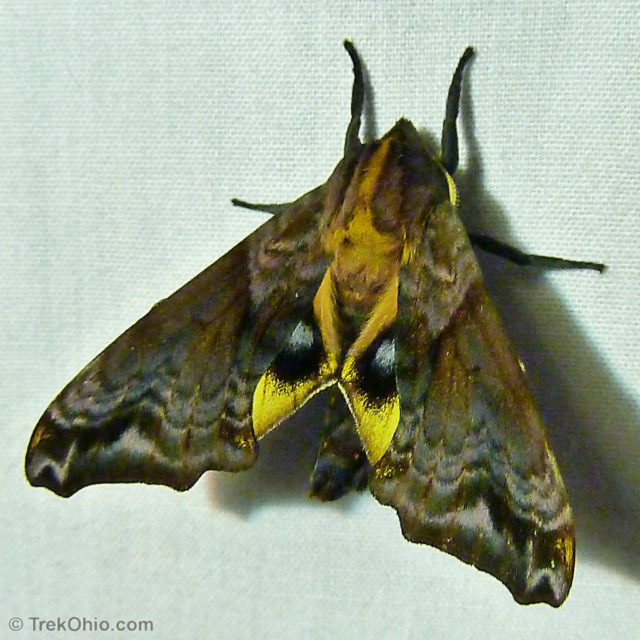
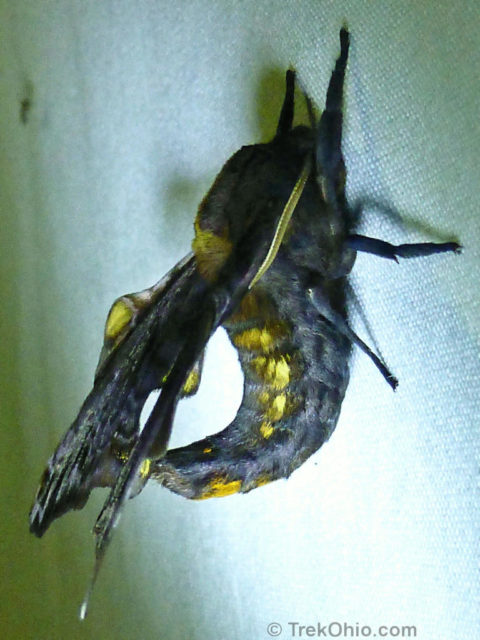
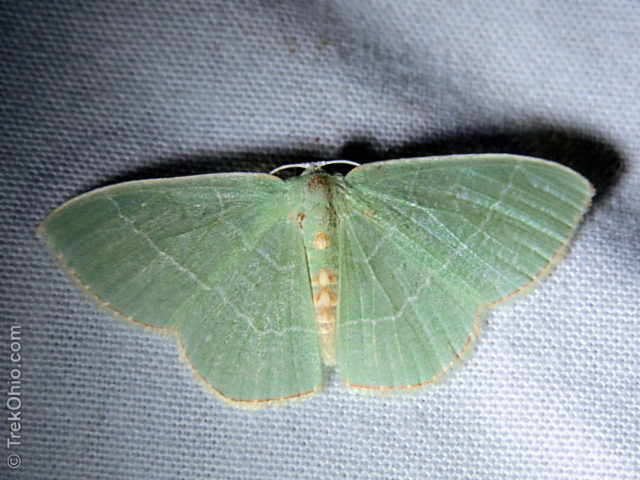
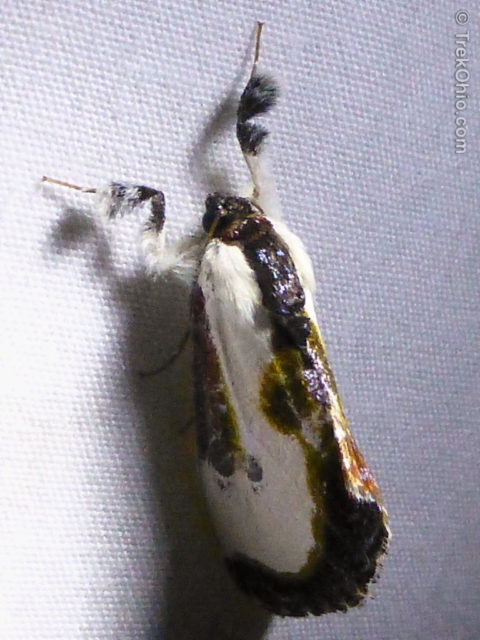
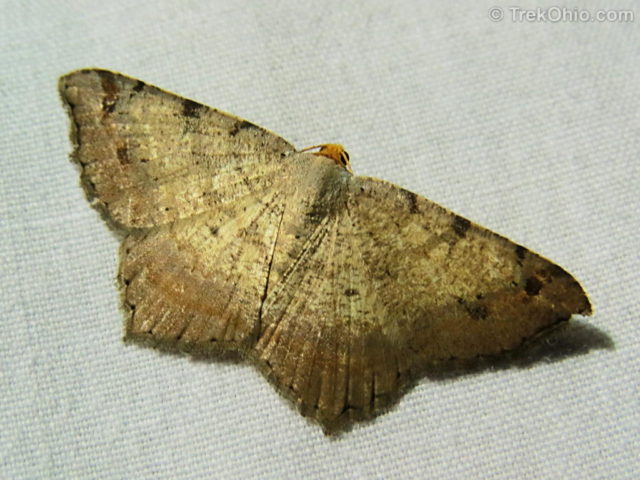
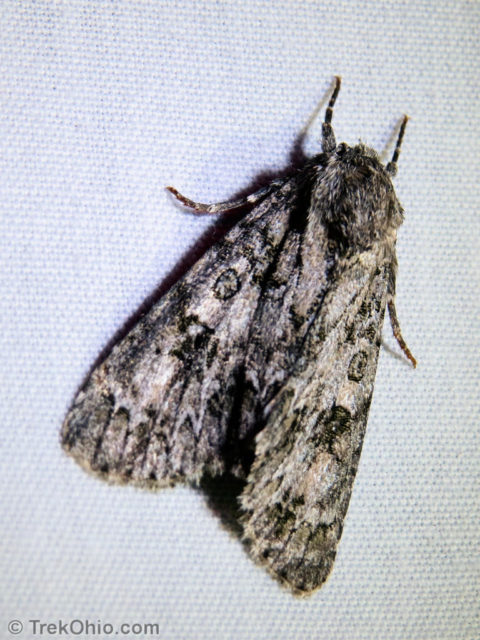
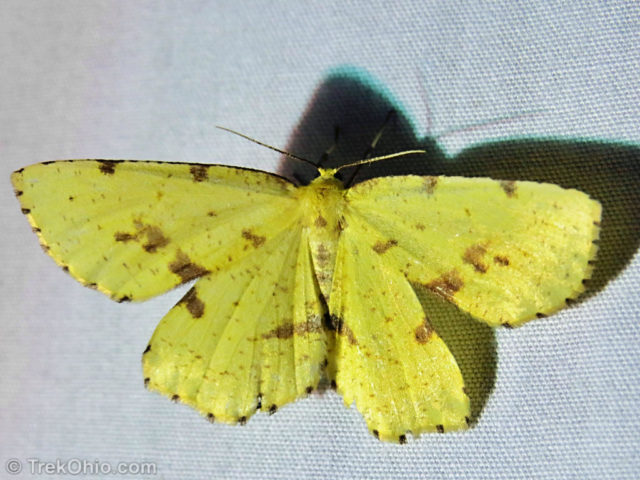
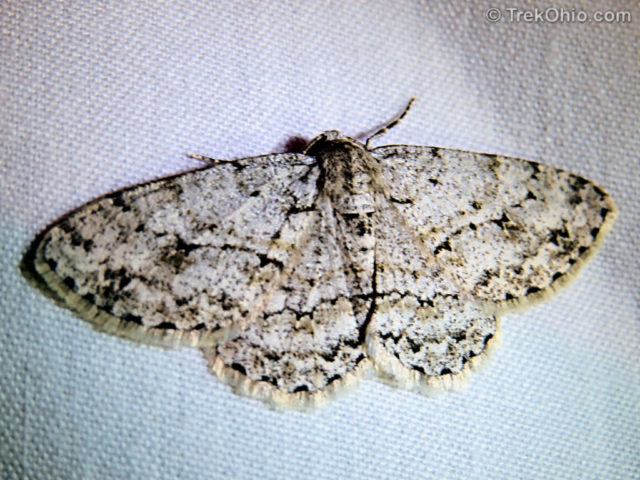
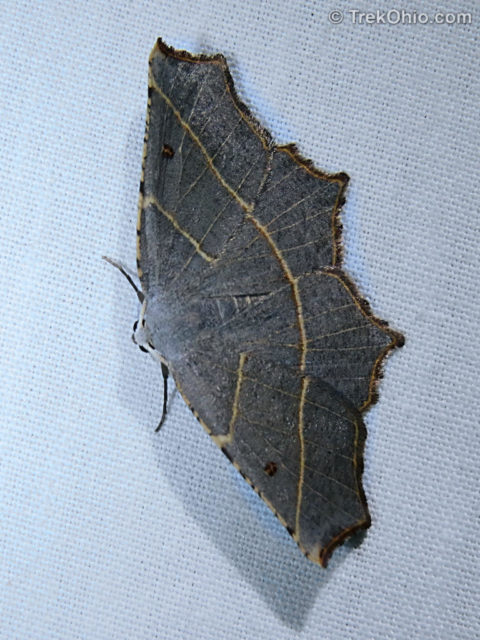
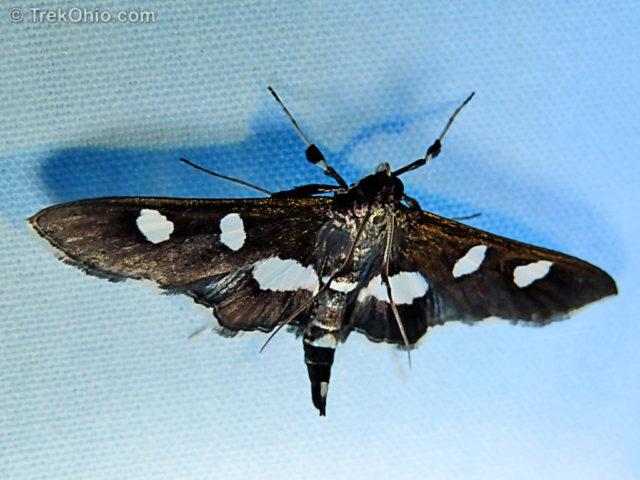
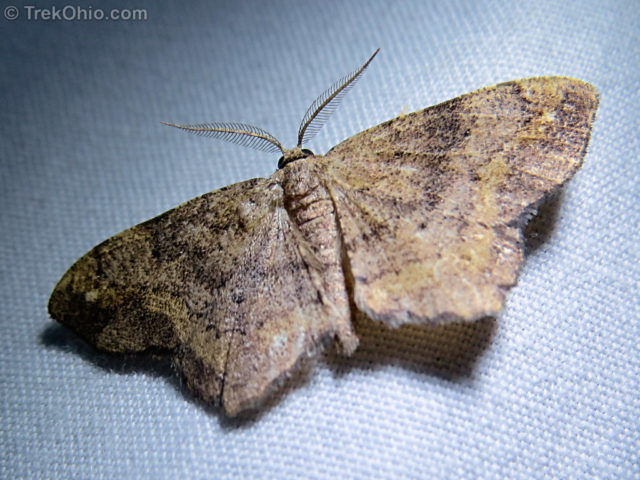
Bob and I both enjoyed our mothing experience, and we thank Tom and Robyn for inviting us. It seemed like a fun, kid-friendly activity that you might want to try with your family in the backyard. There’s also an annual event in Ohio called Mothapalooza that you might want to try.
Additional information
- TrekOhio: Wahkeena Nature Preserve – this is where the mothing event was held.
- Mothapalooza! – this year the event was sponsored by the Ohio Division of Wildlife, The Midwest Native Plant Society, Flora-Quest and National Moth Week
- Wikipedia: Moth
- National Moth Week | Exploring Nighttime Nature
- Flickr group: The National Moth Week Pool
- Flickr group: The Moths of the eastern United States Pool
- Mothography 101 – describes technique for photographing moths while they perch on the photographer’s fingertip
More on Butterflies and Moths
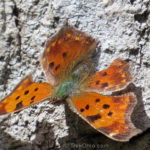
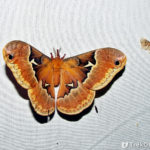
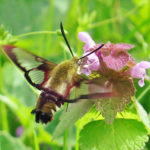
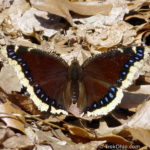
How fascinating!! And what beauties…. They’re such intriguing creatures.
Sounds like a fun activity. I am surprised by the pink and yellow colored one and I love the markings on the sphinx.
Excellent, I’ll schedule it for tomorrow!
Elena
Hiya Elena, As a fellow “moth-er” I thought you might be interested in my “Mothography.” Regards, Warren
http://www.thephotoargus.com/101/mothography-101/
Hi Deb –
Such a cool post! I am so glad you enjoyed your first mothing experience. I want to highlight this on our blog. Do you mind if I do so and use some of your awesome photos (credited and linked to you, of course)?
Elena Tartaglia
National Moth Week Team
Elena,
Thanks! You have my permission to reference this and embed some of our photos (if you haven’t noticed, the photo are hosted at Flickr).
Regards,
Deb
Great post–you saw some really good ones! We went to Mothapalooza and had a great time. I’m tempted to set up some lights but I think I like to go to bed too early!!!
I never heard of this type of activity either but it does make sense. Very educational post and I for one am so pleased that you share these with us. You must have enjoyed the new learning experience yourselves :~).
It wasn’t a public event. However, there are public mothing events held throughout the country during National Moth Week.
I didn’t know that was an activity that was actually held for the public! Haven’t done that in years…brings back good memories! Of course the best time to “moth” is when the silk moths are out…